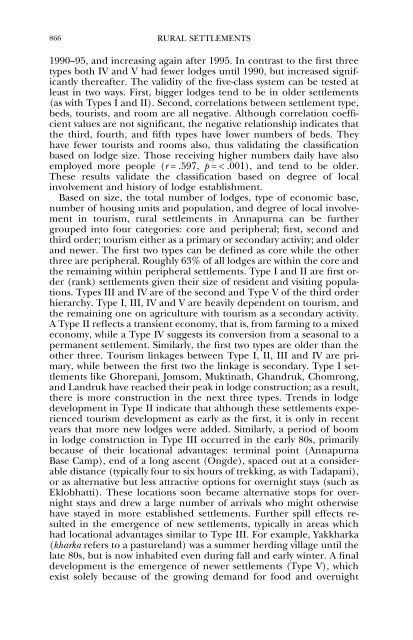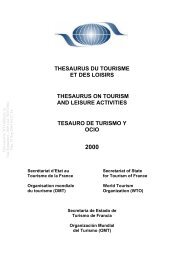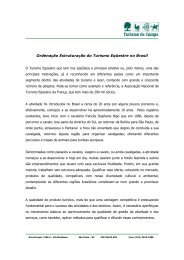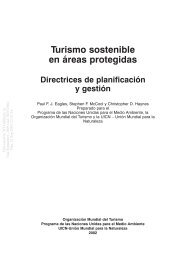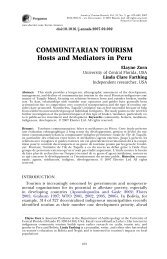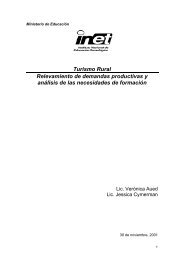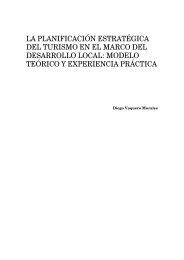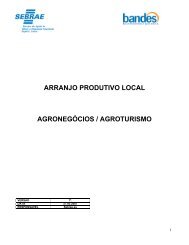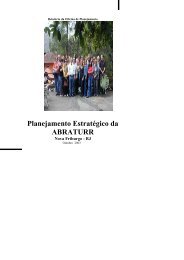TOURISM AND RURAL SETTLEMENTS Nepal's ... - ResearchGate
TOURISM AND RURAL SETTLEMENTS Nepal's ... - ResearchGate
TOURISM AND RURAL SETTLEMENTS Nepal's ... - ResearchGate
You also want an ePaper? Increase the reach of your titles
YUMPU automatically turns print PDFs into web optimized ePapers that Google loves.
866 <strong>RURAL</strong> <strong>SETTLEMENTS</strong><br />
1990–95, and increasing again after 1995. In contrast to the first three<br />
types both IV and V had fewer lodges until 1990, but increased significantly<br />
thereafter. The validity of the five-class system can be tested at<br />
least in two ways. First, bigger lodges tend to be in older settlements<br />
(as with Types I and II). Second, correlations between settlement type,<br />
beds, tourists, and room are all negative. Although correlation coefficient<br />
values are not significant, the negative relationship indicates that<br />
the third, fourth, and fifth types have lower numbers of beds. They<br />
have fewer tourists and rooms also, thus validating the classification<br />
based on lodge size. Those receiving higher numbers daily have also<br />
employed more people (r = .597, p = < .001), and tend to be older.<br />
These results validate the classification based on degree of local<br />
involvement and history of lodge establishment.<br />
Based on size, the total number of lodges, type of economic base,<br />
number of housing units and population, and degree of local involvement<br />
in tourism, rural settlements in Annapurna can be further<br />
grouped into four categories: core and peripheral; first, second and<br />
third order; tourism either as a primary or secondary activity; and older<br />
and newer. The first two types can be defined as core while the other<br />
three are peripheral. Roughly 63% of all lodges are within the core and<br />
the remaining within peripheral settlements. Type I and II are first order<br />
(rank) settlements given their size of resident and visiting populations.<br />
Types III and IV are of the second and Type V of the third order<br />
hierarchy. Type I, III, IV and V are heavily dependent on tourism, and<br />
the remaining one on agriculture with tourism as a secondary activity.<br />
A Type II reflects a transient economy, that is, from farming to a mixed<br />
economy, while a Type IV suggests its conversion from a seasonal to a<br />
permanent settlement. Similarly, the first two types are older than the<br />
other three. Tourism linkages between Type I, II, III and IV are primary,<br />
while between the first two the linkage is secondary. Type I settlements<br />
like Ghorepani, Jomsom, Muktinath, Ghandruk, Chomrong,<br />
and Landruk have reached their peak in lodge construction; as a result,<br />
there is more construction in the next three types. Trends in lodge<br />
development in Type II indicate that although these settlements experienced<br />
tourism development as early as the first, it is only in recent<br />
years that more new lodges were added. Similarly, a period of boom<br />
in lodge construction in Type III occurred in the early 80s, primarily<br />
because of their locational advantages: terminal point (Annapurna<br />
Base Camp), end of a long ascent (Ongde), spaced out at a considerable<br />
distance (typically four to six hours of trekking, as with Tadapani),<br />
or as alternative but less attractive options for overnight stays (such as<br />
Eklobhatti). These locations soon became alternative stops for overnight<br />
stays and drew a large number of arrivals who might otherwise<br />
have stayed in more established settlements. Further spill effects resulted<br />
in the emergence of new settlements, typically in areas which<br />
had locational advantages similar to Type III. For example, Yakkharka<br />
(kharka refers to a pastureland) was a summer herding village until the<br />
late 80s, but is now inhabited even during fall and early winter. A final<br />
development is the emergence of newer settlements (Type V), which<br />
exist solely because of the growing demand for food and overnight


